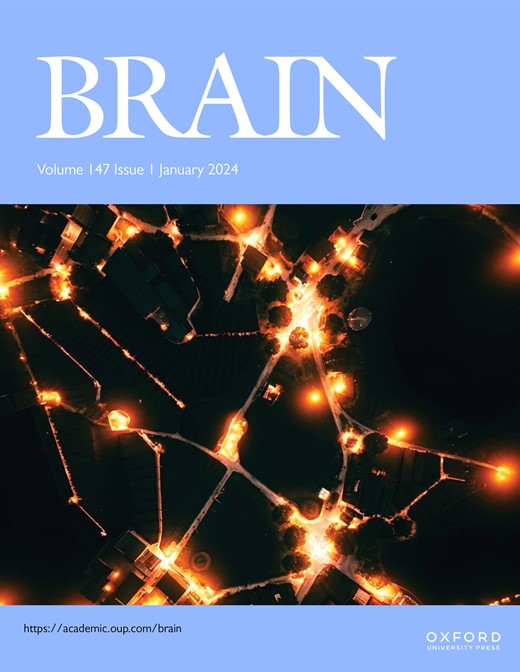将神经源性吞咽困难归类为运动障碍。
IF 10.6
1区 医学
Q1 CLINICAL NEUROLOGY
引用次数: 0
摘要
吞咽是一项复杂的感觉运动任务,对维持营养、水合作用和生活质量至关重要。由于广泛的神经参与以及意志和反射控制的结合,许多神经系统疾病可导致吞咽障碍(吞咽困难)。神经源性吞咽困难的分类框架没有根据功能障碍在感觉运动层次中的位置。因此,在吞咽困难的评估和康复过程中,潜在的神经病理学并没有得到充分的考虑。在这篇综述中,我们通过经典的感觉运动层次和运动障碍术语来探讨神经源性吞咽困难。我们提供了吞咽困难体征和症状的综合证据,在纯粹的运动障碍的情况下,并讨论与评估神经病理体征有关的细微差别,负责口咽吞咽生物力学紊乱。认识到吞咽困难的复杂性和对潜在病理的研究将促进神经源性吞咽困难的临床管理,并为吞咽困难的识别和治疗提供信息。本文章由计算机程序翻译,如有差异,请以英文原文为准。
Classifying neurogenic dysphagia as a movement disorder.
Swallowing is a complex sensorimotor task critical for maintaining nutrition, hydration, and quality of life. Given the widespread neural involvement and combined volitional and reflexive control, many neurologic conditions can result in swallowing disorders (dysphagia). There is no classification framework for neurogenic dysphagia according to where dysfunction lies within the sensorimotor hierarchy. Thus, underlying neuropathology is not thoroughly considered during dysphagia assessment and rehabilitation. In this review, we explore neurogenic dysphagia through classical sensorimotor hierarchy and movement disorders terminology. We provide comprehensive evidence of dysphagia signs and symptoms in pure cases of movement disorders and discuss nuances related to assessing signs of neuropathology responsible for disordered oropharyngeal swallowing biomechanics. Appreciation of the complexities of dysphagia and investigations into underlying pathologies will advance clinical management of neurogenic dysphagia and inform investigations of dysphagia identification and treatment.
求助全文
通过发布文献求助,成功后即可免费获取论文全文。
去求助
来源期刊

Brain
医学-临床神经学
CiteScore
20.30
自引率
4.10%
发文量
458
审稿时长
3-6 weeks
期刊介绍:
Brain, a journal focused on clinical neurology and translational neuroscience, has been publishing landmark papers since 1878. The journal aims to expand its scope by including studies that shed light on disease mechanisms and conducting innovative clinical trials for brain disorders. With a wide range of topics covered, the Editorial Board represents the international readership and diverse coverage of the journal. Accepted articles are promptly posted online, typically within a few weeks of acceptance. As of 2022, Brain holds an impressive impact factor of 14.5, according to the Journal Citation Reports.
 求助内容:
求助内容: 应助结果提醒方式:
应助结果提醒方式:


